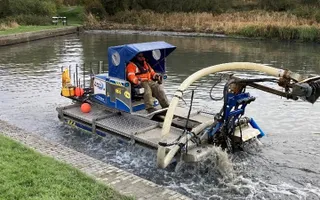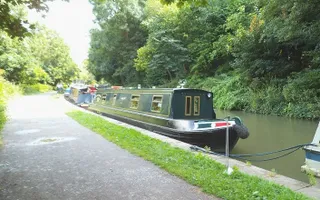Dredging techniques
We use several different techniques to dredge our canals and rivers. Choosing the most appropriate and cost efficient method in each case is key.


Conventional dredging is the most common type of dredging we undertake. We use excavators either on the bank or mounted on boats to dig out the silts and transport them elsewhere for recycling, re-use or disposal. These come in all shapes and sizes to be able to operate on the full range of our waterways, from narrow canals to the biggest rivers.
Hydrodynamic dredging

Hydrodynamic dredging can be used in rivers and tidal waters and involves agitating the silts to re-suspend them, allowing the flow or tide to disperse them downstream. There are a number of ways of re-suspending the silts:
- Ploughing – a tug pulling a plough or harrow along the river bed
- Injecting water – using high-pressure water to agitate the silt
- Suction dredging – using a pump or impellor to suck the material into suspension
Last Edited: 10 May 2024


Stay connected
Sign up to our newsletter and discover how we protect canals and help nature thrive



